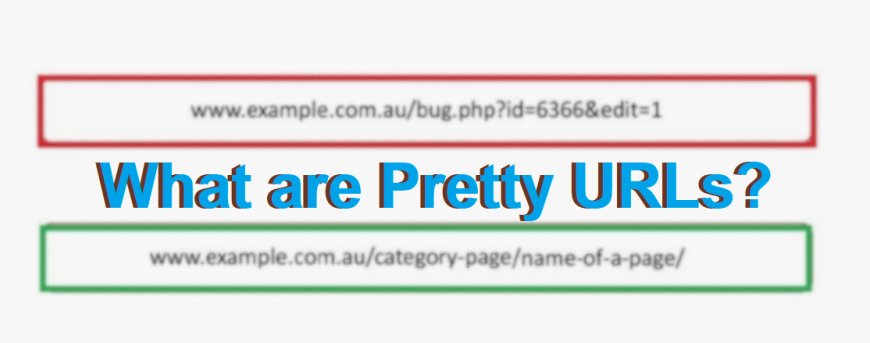A Practical Guide to Setting Up Pretty URLs in PrestaShop
Simplify your URLs and remove PrestaShop IDs with this detailed guide on implementing Pretty URLs.

URLs might seem like a small detail, but they play a huge role in your online store’s success. In a PrestaShop store, default URLs often include unnecessary clutter like PrestaShop IDs, making them less appealing to users and search engines. These IDs not only hinder SEO efforts but can also confuse your customers.
Having faced similar challenges when optimizing my store, I know how overwhelming it can be to fix this issue. However, implementing Pretty URLs—clean, descriptive links free of IDs—is one of the best decisions you can make. Let me walk you through the process so you can avoid the mistakes I made and get it right the first time.
Why You Need Pretty URLs in PrestaShop
Pretty URLs are essential for building an SEO-friendly and user-centric store. Unlike default URLs with PrestaShop IDs, Pretty URLs offer these advantages:
- Enhanced SEO: Clean URLs with relevant keywords improve search engine rankings.
- Better User Experience: Customers are more likely to trust and click on descriptive links.
- Professional Branding: A neat URL structure strengthens your store’s credibility.
For example:
- Default URL:
www.example.com/index.php?id_product=12&controller=product - Pretty URL:
www.example.com/best-selling-shoes
Notice how the latter is easier to read and understand? That’s the power of a Pretty URL.
Preparing Your Store for Pretty URLs
Before diving into the implementation process, ensure your store meets these prerequisites:
-
Activate Friendly URL Settings
PrestaShop has a built-in friendly URL feature that lays the foundation for Pretty URLs. -
Enable URL Rewriting on Your Server
Make sure the Apache mod_rewrite module is activated on your server. Without it, Pretty URLs won’t function. -
Backup Your Store
Always create a backup of your store before making changes. This step saved me countless headaches when I encountered errors during the process. -
Install the Pretty URL Module
While you can manually tweak URLs, using a module designed to remove PrestaShop IDs streamlines the process.
A Step-by-Step Guide to Implementing Pretty URLs
Let’s break down the implementation process:
1. Activate Friendly URLs in PrestaShop
Start by enabling PrestaShop’s built-in friendly URL feature:
- Go to your PrestaShop back office.
- Navigate to Shop Parameters > Traffic & SEO.
- Scroll down to the “Set up URLs” section.
- Toggle the Friendly URL option to “Yes.”
- Save your settings.
This feature converts default URLs into more readable links, but it doesn’t remove PrestaShop IDs.
2. Install the Pretty URL Module
To eliminate PrestaShop IDs from your URLs, you’ll need a specialized module. Here’s how to get started:
- Purchase a reliable Pretty URL module from the PrestaShop marketplace.
- Upload and install the module via your back office under Modules > Module Manager.
- Configure the settings to remove IDs and unnecessary parameters.
3. Set Up Redirects for Old URLs
When switching to Pretty URLs, your old URLs will no longer work unless you set up redirects. A good Pretty URL module typically handles this automatically.
- Go to the module’s settings and enable the 301 Redirect feature.
- Test your redirects to ensure customers and search engines are directed to the updated links.
4. Customize Your URLs
The Pretty URL module often includes options for further customization:
- Remove redundant words or characters.
- Add relevant keywords to optimize each URL.
- Ensure URLs are consistent across languages.
5. Test Your URLs
Once the setup is complete, test your URLs thoroughly:
- Check that all pages load correctly.
- Use tools like Google Search Console to identify any broken links.
- Test your store in different languages if you operate a multilingual site.
Overcoming Common Challenges
When I first implemented Pretty URLs, I ran into a few roadblocks. Here’s how you can address them:
Issue 1: Errors During URL Activation
If enabling friendly URLs causes errors, it’s often due to server settings. Check that:
- The mod_rewrite module is enabled.
- File permissions are correctly configured.
Issue 2: Broken Links
Broken links can harm your SEO. Use the module’s redirect feature or a third-party tool to monitor and fix them.
Issue 3: Language-Specific URLs
Managing multilingual stores can complicate Pretty URL implementation. The Pretty URL module’s multilingual support ensures clean URLs for every language, saving you time and effort.
Why Use the Pretty URL Module?
While it’s possible to optimize URLs manually, the Pretty URL module simplifies the process significantly:
- Automated ID Removal: No need for tedious manual edits.
- Built-In Redirects: Prevents broken links with automatic 301 redirects.
- Multilingual Support: Handles multiple languages with ease.
- SEO Optimization: Ensures your URLs are search-engine friendly from the start.
- Time Efficiency: Frees you to focus on other aspects of your store.
Having tried both manual optimization and the Pretty URL module, I can confidently say that the module is worth every penny.
Final Touches for Perfect URLs
Once your Pretty URLs are in place, follow these best practices to maintain them:
- Monitor Regularly: Use tools like Google Analytics and Search Console to track URL performance.
- Avoid Frequent Changes: Changing URLs repeatedly can confuse search engines and users.
- Update Your Sitemap: Generate and submit an updated sitemap to search engines whenever you make changes.
Conclusion: Why Pretty URLs Are Essential
Implementing Pretty URLs isn’t just about aesthetics—it’s a vital step in improving your store’s SEO, user experience, and overall credibility. By removing PrestaShop IDs and simplifying your URLs, you create a smoother shopping experience that benefits both customers and search engines.
The Pretty URL module makes this transformation easy, saving you time and ensuring professional results. Don’t let messy URLs hold your store back—start optimizing today and see the difference it makes.
What's Your Reaction?




























